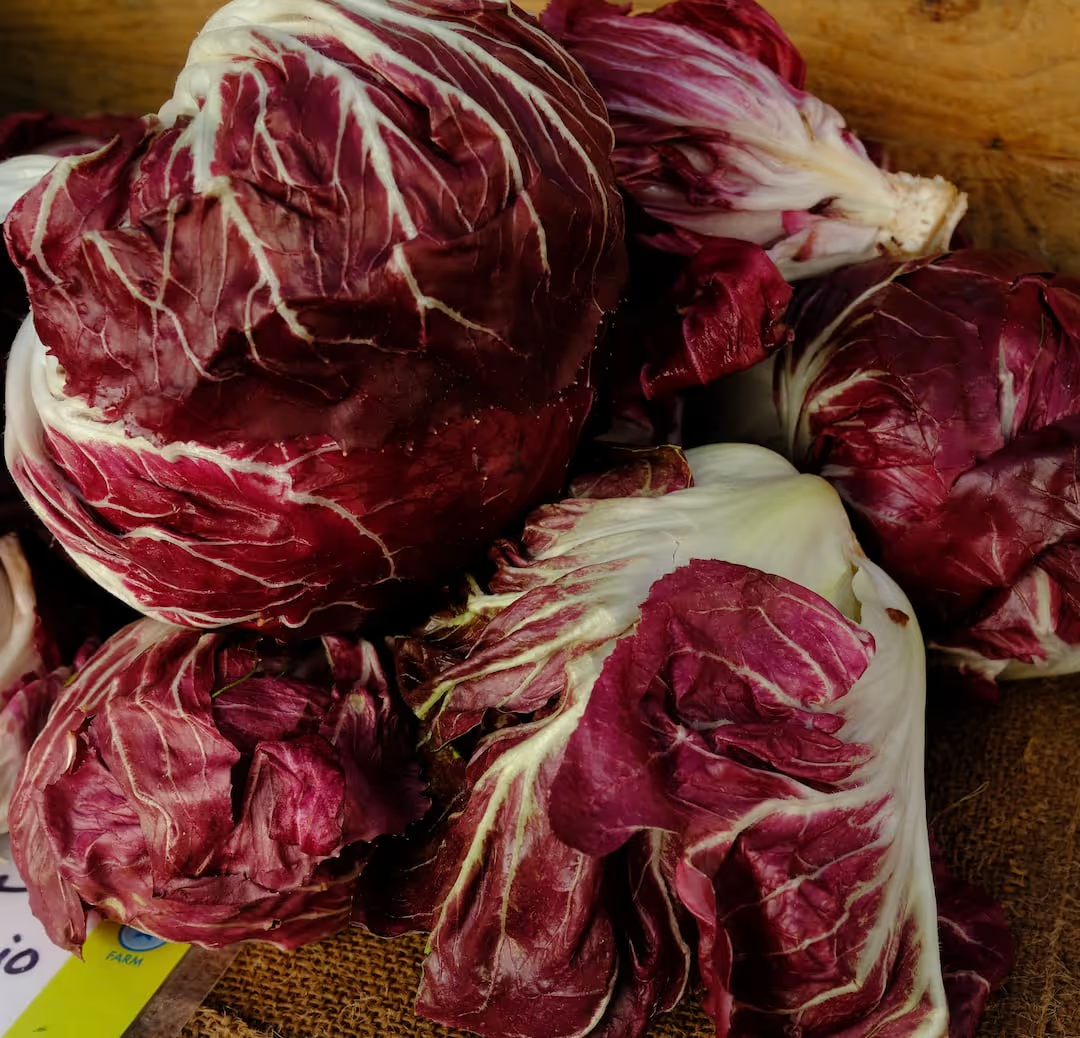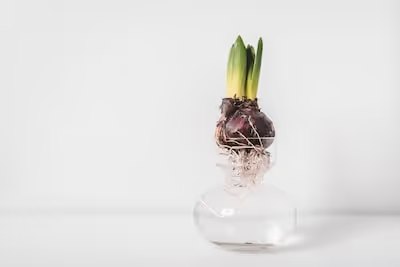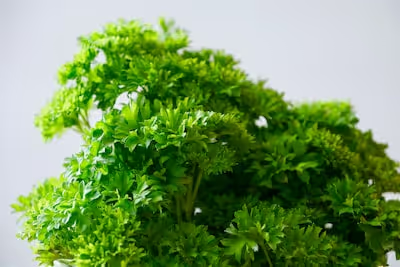Growing Radicchio for a Flavorful, Garden-Fresh Harvest

Growing Radicchio
Growing radicchio brings color, flavor, and a touch of Italian flair to your garden. Start seeds indoors 4-6 weeks before the last frost, transplant hardy seedlings in rich, well-drained soil and keep plants cool for the sweetest, crunchy leaves. With just a bit of care, you'll soon harvest stunningly red, slightly bitter heads perfect for grilling or brightening your salads—keep reading and I'll show you exactly how.
Cheatsheet: Radicchio Growing Made Simple
🌱 Best Sowing Windows
Spring: Sow indoors 4-6 weeks before last frost.
Fall: Direct sow mid-summer for autumn harvest. Prefers 50–70°F (10–21°C).
🌤️ Site & Soil
- Full sun or light shade.
- Rich, well-drained soil; pH 6.0-7.0.
- Mix in compost before planting.
🌰 Planting Details
- Sow seeds ¼ inch (0.6 cm) deep, 8-10 in (20-25 cm) apart.
- Thin to 10-12 in (25-30 cm) for heads.
💧 Water & Care
- Keep soil evenly moist; avoid soggy roots.
- Mulch lowers weeds, keeps roots cool.
- Feed monthly with organic fertilizer.
🥗 Harvest & Storage
- Harvest when heads firm (50–90 days).
- Cut at base; rinse and store in fridge up to 3 weeks.
- Peak flavor: after first light frost (sweetens leaves).
🦾 Tools and Products You'll Need
- Radicchio seeds
- Compost
- Organic fertilizer
- Mulch
- Hand trowel
- Watering can or hose
- Garden scissors
- Gloves
🌟 Nutrition & Self-Sufficiency
High in antioxidants, K and C vitamins. Grows fast—yields up to 15 heads/m². Save seeds for future plantings.
- Prepare bed with compost. Test and adjust pH if needed.
- Sow seeds at correct depth and spacing.
- Keep soil moist; mulch after seedlings emerge.
- Thin plants for strong heads.
- Feed monthly; remove weeds by hand.
- Harvest when heads are tight and crisp.
-
Growing Radicchio: the cold-season crop with attitude
I grow radicchio for bite, perfume, and that electric burgundy crunch that wakes up everything on the plate. It behaves like a cool-weather prima donna, and once you learn its cues, it rewards you with tight, candy-striped heads that store like a dream.
Varieties that actually behave
Chioggia forms round, cabbage-like heads, forgiving and dependable for beginners. Treviso precoce grows tall, loaf-shaped heads that grill beautifully, while Castelfranco makes speckled rosettes with a gentle bite.
If you like winter theatrics, Tardivo gets lifted after frost and forced for those sculptural, squid-like leaves. I plant two types each season, one safe bet and one diva.
Timing is flavor
Radicchio colors and sweetens in cool weather, 45 to 65 F or 7 to 18 C. Heat pushes bitterness and bolting, and I have lost July plantings to a September heat spike.
For fall harvest, I sow or transplant 60 to 80 days before first frost. For spring, I seed indoors late winter, then transplant as soon as soil can be worked, but spring heads run smaller if heat arrives early.
Soil that sets you up to win
Aim for a pH of 6.2 to 7.0 and even moisture. I work in 1 to 2 inches or 2.5 to 5 cm of finished compost and a balanced organic fertilizer at planting.
Excess nitrogen gives huge leaves and floppy heads, so I side-dress lightly at 3 to 4 weeks, then stop. Sandy beds need more frequent watering and a little extra potassium for color and firmness.
Sowing, spacing, and transplants
Direct seed 0.25 inch or 6 mm deep once soil hits 50 F or 10 C, or start indoors 3 to 4 weeks before transplanting. Harden off well, since soft seedlings sulk in spring winds.
Space Chioggia 10 to 12 inches or 25 to 30 cm, Treviso 8 to 10 inches or 20 to 25 cm, and Castelfranco 12 to 14 inches or 30 to 35 cm. Tight spacing makes smaller, denser heads for market-style crunch.
Light, daylength, and why fall crops rule
Radicchio is sensitive to photoperiod and temperature swings. Shorter days and cool nights trigger head formation and deep color.
I cover summer transplants with 30 percent shade cloth for 10 to 14 days during heat. That single move cut my bolting by half.
Watering that prevents bitterness
Keep soil evenly moist, about 1 inch or 25 mm per week, more in sandy ground. Uneven water can lead to leaf tipburn, which looks like scorched margins from a calcium uptake hiccup.
Drip lines under mulch beat overhead watering for clean leaves and fewer foliar diseases. I run brief morning cycles, then a longer soak before weekend heat.
Color and crunch, managed
Cool nights drive anthocyanin development, which paints those maroon leaves. I notice the best color after a string of nights below 50 F or 10 C.
For Treviso, I sometimes tie outer leaves loosely for 7 to 10 days to improve shape and blanch the heart. It looks fussy, yet the payoff on the cutting board is real.
Forcing Tardivo at home
After a light frost, I lift Tardivo with roots attached, trim to a short crown, then stand roots in a bucket of cool water in a dark space at 50 to 55 F or 10 to 13 C. In 10 to 20 days, pale, curled leaves emerge with a floral scent and measured bitterness.
This is kitchen theater in slow motion, and it turns winter into a tasting menu.
Pests and problems I actually see
Slugs and snails chew ragged holes, so I use beer traps, copper tape, and sharp diatomaceous earth borders on wet weeks. Flea beetles can stipple young leaves, and floating row cover at transplant keeps them honest.
Aphids settle deep in heads late season, so I blast with a sharp water jet, then release lady beetles near dusk. Downy mildew shows up in cool, wet stretches, which drip irrigation and wider spacing help avoid.
Harvest cues and storage
Harvest when heads feel dense and slightly springy, usually 55 to 85 days from transplant depending on type. Cut at the base with a clean knife and trim to tight wrappers.
Store unwashed in perforated bags at 32 to 36 F or 0 to 2 C with high humidity. I hold Chioggia two to three weeks without quality loss if I keep ethylene sources like ripening apples far away.
"Optimal storage temperature for chicories like radicchio is around 32 F, high humidity, with sensitivity to ethylene." UC Davis Postharvest recommendations.
Bitterness, explained and tamed
The bitter edge comes from sesquiterpene lactones, which concentrate under heat and drought. Cool finish, steady moisture, and mature heads balance the profile.
Salt, fat, and char soften the bite in the kitchen. I grill Treviso with olive oil and lemon, then shave pecorino while it’s still warm.
My field notes
A September cold snap once turned a pale planting into a burgundy parade in four nights. I have also cracked heads by watering hard after a dry spell, so I now ease into big irrigations.
Bird pecks? I drape lightweight row cover right after transplant, then remove after two weeks. It doubles as shade in late summer.
Growing Radicchio in containers
Use a 5-gallon or 19-liter pot for two plants, filled with a peat-free, compost-forward mix. Fertigate lightly every 10 to 14 days, then stop two weeks before expected maturity to firm heads.
Container crops dry out fast on windy balconies. I tuck a cheap soil moisture meter in the pot and water when it reads in the middle zone.
Crop rotation and soil health
Rotate with alliums or fruiting crops, and give chicories a 3-year break to starve soilborne issues. I seed a quick buckwheat cover after harvest to mop up leftover nutrients and feed pollinators.
Fall mulching with shredded leaves locks in moisture, bumps organic matter, and insulates roots for late heads.
Seeds, seedlings, and what to buy
- Seeds: pick pelleted seed for precision sowing in cell trays, and check days to maturity by season, some lines are tuned for fall color.
- Seedlings: look for compact, stocky starts with 4 to 5 true leaves, avoid pot-bound plants with spiraled roots.
- Row cover: choose 0.5 oz or 17 g fabric for pest exclusion, and 30 percent shade cloth for heat relief on summer transplants.
- Soil test kits: pick models that report pH plus NPK, then spot-check with your local extension service once a year.
Top picks by goal
- Fast heads for beginners: Chioggia types labeled for fall maturity, 60 to 70 days.
- Grilling and char: Treviso precoce for long, even midribs.
- Mild and pretty: Castelfranco for speckles and salad sweetness.
- Winter art project: Tardivo for forcing after frost.
Common mistakes and quick fixes
- Loose, leafy plants with no heads: too much nitrogen or heat, reduce feeding and target fall timing.
- Brown leaf edges inside heads: tipburn from uneven moisture, shift to steady irrigation and add mulch.
- Sudden bitterness spike: heat stress, give temporary shade and water early mornings.
- Heads splitting: big drink after drought, rehydrate gradually across two or three irrigations.
Companions and spacing hacks
I interplant with scallions, which slip out early and barely touch radicchio roots. Low dill and cilantro offer gentle shade and lure beneficial insects.
A narrow bed of 4 rows at 10 inches or 25 cm apart fits beautifully under a single 4-foot or 1.2 m sheet of fabric, which speeds netting before storms.
Science and sources that inform my practice
UC Davis Postharvest Center advises near-freezing storage and ethylene avoidance for chicories, which matches my cooler logs. University extension guides from Wisconsin and Cornell outline cool-season scheduling that tracks with my fall success.
Seed houses like Johnny’s catalog radicchio by seasonal slot, and their notes on color development in cool nights align with what I see in the field. I cross-check days to maturity against my own records and adjust sowing by a week in warm autumns.
"Cool nights concentrate color and tighten heads." Field note echoed by multiple extension guides and seed crop sheets.
Quick kitchen payoffs that justify the bed space
Quarter Chioggia, toss with oil and sherry vinegar, then roast at 450 F or 232 C for 12 minutes. Grill Treviso hard, finish with anchovy butter, and watch skeptics convert.
For salads, soak ribbons in ice water for 15 minutes to tame the bite, then spin dry. Bitterness meets fat with grace, so bring cheese, nuts, and good olive oil.
FAQ lightning round
Can radicchio survive frost, yes, light freezes often improve flavor and color, and I have harvested after 28 F or minus 2 C nights. Does it regrow after cutting, a small second flush of loose leaves appears, but heads are a one-cut crop.
Will it cross with lettuce, no, it crosses with other chicories, so isolate if saving seed in year two. Can I grow it in partial shade, yes, morning sun with afternoon shade helps in late summer plantings.
Frequently Asked Questions About Growing Radicchio
What soil conditions encourage healthy radicchio growth?
Radicchio thrives in well-drained, fertile soil with a slightly acidic to neutral pH level (around 6.0 to 6.8). Enrich your garden bed with organic compost to create nutrient-rich soil and ensure consistently moist conditions for optimal root development.
When is the ideal planting time for radicchio?
For best results, plant radicchio seeds directly outdoors in cooler conditions. Early spring or late summer planting promotes vigorous growth since radicchio prefers air temperatures around 60–65°F (15–18°C). Avoid hotter periods as high heat can cause bitterness or premature bolting.
How much sunlight does radicchio need?
Radicchio requires full sun, ideally receiving at least 6–8 hours of direct sunlight daily. In areas with intense summer heat, partial afternoon shade can benefit plants by reducing stress and enhancing leaf flavor and texture.
How often should radicchio be watered?
Water radicchio regularly, providing around 1–1.5 inches (2.5–3.8 cm) per week. Consistent moisture helps to prevent bitterness and supports steady growth. Increase watering during dry spells, but avoid overwatering that could lead to root rot or fungal issues.
What companion plants enhance radicchio growth?
Plant radicchio alongside beneficial companions like lettuce, carrots, onions, and fennel. These neighboring plants help deter pests, attract pollinators, and optimize nutrient availability, supporting a healthier garden.
When and how should radicchio be harvested?
Harvest radicchio heads once they achieve firmness and size, typically after 60 to 70 days. Use a sharp knife to cut off the head at soil level, leaving the root intact if you prefer to obtain a possible second growth. Harvest during cool morning hours to ensure maximum crispness and sweetness.
How can bitterness in harvested radicchio be reduced?
To minimize bitterness after harvesting, soak radicchio leaves briefly in cold water before use. Also, growing during cooler weather and providing consistent moisture throughout the growth period can naturally promote milder, sweeter flavors.
Growing Radicchio rewards patience and a taste for the bold. With steady moisture, rich soil, and a touch of cool weather, those tight, red heads form up with their signature bite. From seed to plate, you get more than just color—this is a crop that brings grit and flavor to your garden and your table.
Let the bitterness mellow with a quick grill or a splash of good olive oil. Plant it alongside other cool-season crops like broccoli or cauliflower for a patch that’s as lively as your palate. Growing Radicchio isn’t fussy, but it does demand respect—give it what it needs, and you’ll harvest more than just leaves; you’ll get a taste of tradition and a reason to linger in the garden a little longer.
The Homesteader's Guide to Thriving Radicchio Harvests
Practical Crop Rotation Strategies
- Alternate radicchio with legumes or root crops to minimize soil depletion and control pests naturally.
- Incorporate marigolds, garlic, or onions between rows to deter aphids and leaf-eating caterpillars.
- After radicchio harvest, plant nitrogen-fixing cover crops, like clover or peas, to replenish nutrients.
Saving Seeds for Self-Sufficiency
- Select vigorous, healthy radicchio plants to flower and produce seeds for next season.
- Collect seeds when flower heads dry completely; store in airtight jars in cool, dark places for up to five years.
- Regular seed-saving boosts adaptive traits ideal for your garden soil and regional weather conditions.
Preserving Radicchio for Year-Round Nutrition
- Cut harvested heads, separate leaves, blanch quickly, and freeze in airtight bags to retain nutrients and flavor.
- Dry surplus radicchio leaves in a dehydrator at low temperature (125°F / 52°C) for 8-12 hours; crush into powders for soups and stews.
- Ferment radicchio using sea salt brine (2% salinity) to extend shelf life, enhance probiotic benefits, and support digestive health.
Health and Self-Sufficiency Benefits
- Radicchio provides high levels of vitamin K; supports bone density and reduces inflammation.
- Boost domestic food resilience by cultivating radicchio varieties adapted for cold climates, hardy down to 20°F / -6°C.
- One square meter (3.3 sq feet) can yield approximately 4 kg (8.8 lbs) of radicchio annually, maximizing modest garden spaces.
Find out which plants will thrive in your garden!
Answer a few fun questions and get custom plant recommendations perfect for your space. Let’s grow something amazing together!

start your season





